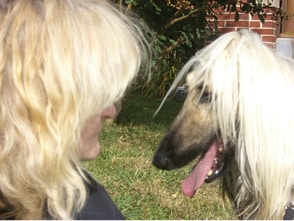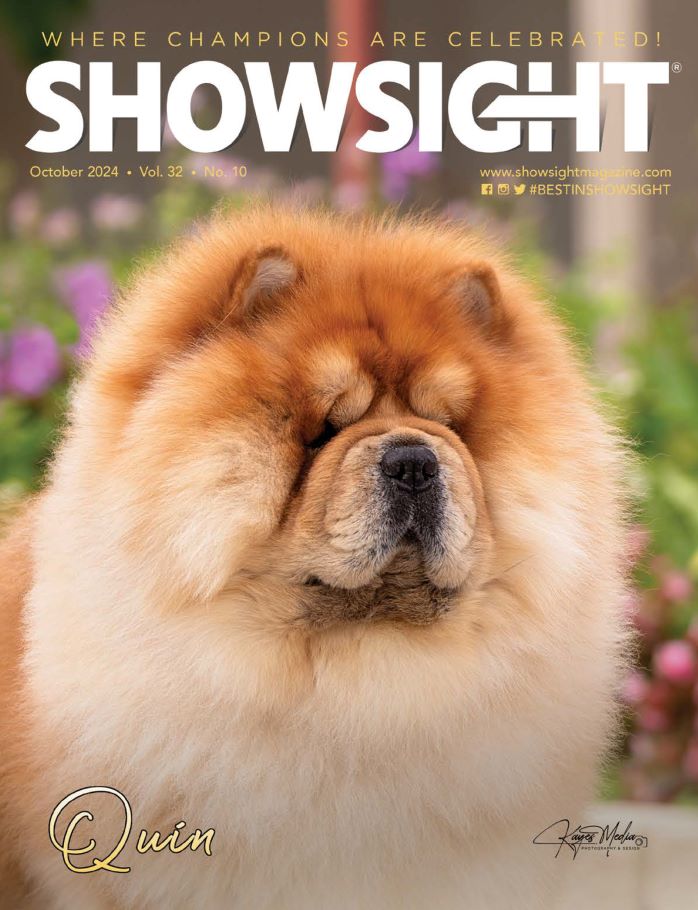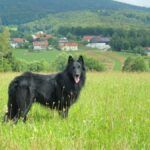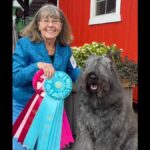The Bubble – Breeders Are Like Apples
You can’t compare apples to oranges, but let’s compare apples to… breeders! We hear cries from the veterinary profession, from the public, from the dog show community, and from the activists who oppose the breeding of purebred dogs and closed gene pools stating that there are more hereditary problems these days than in the past. Blame is usually lumped squarely on the breeders, with a good chance that the “show” breeder gets more blame than the one who breeds for work or for the field.
So, where do apples come into it? Everyone knows there are good apples and bad apples—just as there are good breeders and bad. All apples start the same way, as buds which bloom as flowers and form fruit and ripen. Wise growers nurture their apple trees to maximize the number of good apples, minimize the bad, and bring the good ones to ripe perfection. Cut off all the branches before the fruit are formed and there would be no fruit at all.
The present situations that are confronting breeders can be likened to a group of lumberjacks approaching an apple orchard with a chainsaw. Witness what is happening in some cities that want to ban all dog breeding—not just to eliminate the bad apples but to destroy them all.
Breeders, like apples, have to mature. They need to gain experience, knowledge, and expertise so that they can be able to recognize incipient problems and know how to deal with them. Breeders must also learn the necessity of accepting that situations can occur that have to be dealt with and not just swept under the rug.
Over the years, some breeds have faced major problems with hereditary defects which were dealt with promptly and eliminated, while others became plagued with problems due to lack of knowledge. A condition may have existed which had not yet been identified as a hereditary issue and no effort was made to control it. In some instances, there were bad apples who did hide the truth with intent, disseminating the defective genes throughout a breed, but wise breeders, the good apples, continued to do their best, producing good, healthy dogs and puppies. These were the people who had gained knowledge and experience and knew that sometimes there could be a problem in the best families. Not all defective genes are inevitably traced back to an ancestor, as mutations can happen, especially today with pesticides and environmental toxins, but all can be passed on to a descendent.
In some instances, there were bad apples who did hide the truth with intent, disseminating the defective genes throughout a breed, but wise breeders, the good apples, continued to do their best, producing good, healthy dogs and puppies.
Breeders of the past were not just looking for the perfect dog, they had as a goal a multigenerational plan to develop a line that would breed true. Twenty or so years ago the idea was promoted that a breeder should only breed to replace the current show dog, and for those whose priority is to replace the current show or obedience star, the future generations are of little importance. This, too, could have had an effect on the genetic health of many breeds. If a dog had a problem that could be fixed, it was fixed and the dog was shown or trialed. If the dog became popular and was used for breeding, his genes, good and bad, would have been distributed across the breed.
Breeders who maintained an actual breeding program would have had a choice that the occasional or replacement breeder does not. Over the past 20 years, maintaining a breeding program has become increasingly difficult. Breeders have been faced with local zoning regulations limiting the number of dogs they can own, legislation that limits their ability to breed litters, and peer pressure as to what a “responsible breeder” should do.
One breeder posted on social media that if anyone contacted her wishing to use one of her stud dogs and she knew that they bred a litter a year or more ago, she would refuse! Yes, to her, one single litter per year was too many. Those who have been able to maintain a kennel with more than a single stud dog or brood bitch have been able to make a choice, and if it were found that it was affected by a genetic defect it could be removed from the breeding program and another dog or bitch used instead. Limiting numbers also limits choice.
Winning has been everything to many people from the beginning of dog shows, and “fixing” problems is not new. Terrier tails were being “cracked” before WWII, and teeth were being filed to correct a bite before the word orthodontics was coined—BUT, were all of these dogs bred from? There were many top winners over the years whose brothers were used at stud instead, the theory being that often the brother was the better sire. Or was it simply that the owners and breeders knew that to breed from the winner would only cause more problems in the future? Having a choice in the kennel meant that even when show ring ethics were questionable, breeding ethics could be maintained.
Now that breeders can benefit from advances in molecular genetics in many (sadly, not all) breeds, breeders have the advantage of safely breeding from dogs that are unaffected by any hereditary condition but are carriers of a recessive gene for a defect when breeding to a mate that has been tested clear. In the past, the only choice was to eliminate both parents and even littermates from being bred from or taking the chance of producing affected puppies. This has had a negative effect on many breeds which now lack genetic diversity, and the modern trend of limiting breeding opportunities only makes this worse.
Dedicated breeders may have dogs and bitches that are still too young to be shown or worked, others that are in training but are too young to be bred from, and those actively being campaigned (outside of those that the breeder plans to breed within the year). Laws making the ownership of a single intact female subject to onerous legislation would make this impossible for show breeders and performance breeders alike.
Breeders deserve more support and recognition both from within the different communities and by the general public. The public has been conditioned to think of the words “breeder” and “kennel” as being negative, and breeding more than occasionally or owning more than one breed (two at most) as red flags. This thinking has to change. If the owners have the appropriate accommodations and partners or family members who have their known preferences, why not? If a breeder of an established breed chooses to add a rare breed that may be facing the risk of extinction, why not? In fact—they should!
The present situations that are confronting breeders can be likened to a group of lumberjacks approaching an apple orchard with a chainsaw. Witness what is happening in some cities that want to ban all dog breeding—not just to eliminate the bad apples but to destroy them all.










